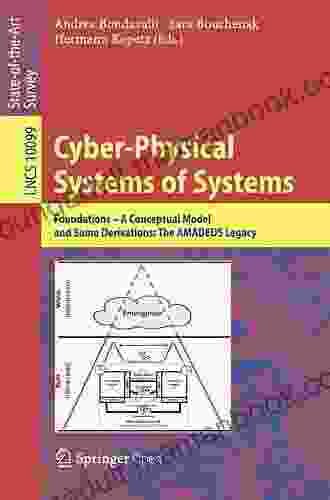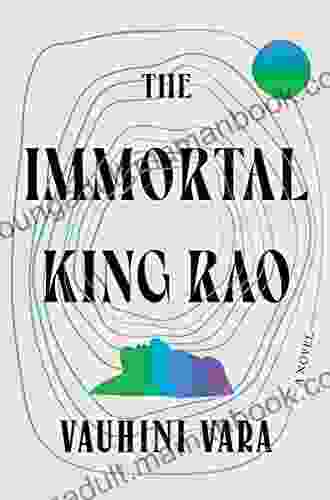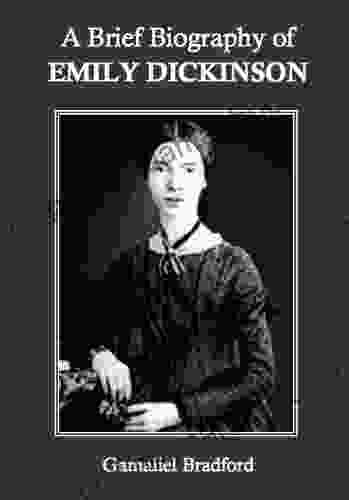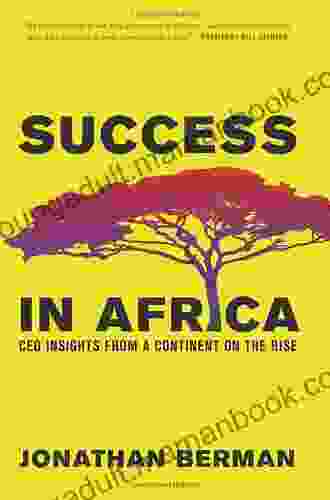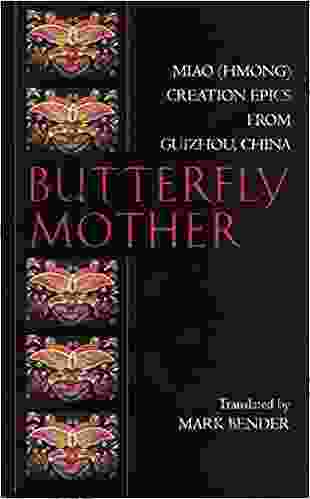Foundations Conceptual Model And Some Derivations

The Foundations Conceptual Model (FCM) is a general-purpose conceptual model that can be used to represent a wide variety of systems. It is based on the idea that all systems can be decomposed into a set of interacting components. These components can be anything from physical objects to abstract concepts. The FCM provides a way to represent the relationships between these components and to model their behavior.
An example of how the FCM can be used to model the behavior of a physical object is a car. A car can be decomposed into a set of components, such as an engine, a transmission, and wheels. These components interact with each other to produce the behavior of the car. The FCM can be used to represent the relationships between these components and to model their behavior.
4.1 out of 5
| Language | : | English |
| File size | : | 10722 KB |
| Text-to-Speech | : | Enabled |
| Enhanced typesetting | : | Enabled |
| Print length | : | 474 pages |
| Screen Reader | : | Supported |
The FCM can also be used to model the behavior of abstract concepts. For example, a company can be decomposed into a set of components, such as departments, employees, and customers. These components interact with each other to produce the behavior of the company. The FCM can be used to represent the relationships between these components and to model their behavior.
The FCM is a powerful tool that can be used to model a wide variety of systems. It is a general-purpose model that can be used to represent both physical and abstract systems. The FCM is also a flexible model that can be tailored to the specific needs of a particular application.
Some Derivations from the FCM
The FCM can be used to derive a number of other conceptual models. These models can be used to represent specific aspects of a system or to model the behavior of a system in more detail. Some of the most common derivations from the FCM include:
* The Object-Role Model (ORM) is a data modeling technique that is based on the FCM. The ORM provides a way to represent the relationships between objects in a system. It can be used to model both physical and abstract objects. * The State Transition Model (STM) is a behavioral modeling technique that is based on the FCM. The STM provides a way to represent the states of a system and the transitions between those states. It can be used to model the behavior of both physical and abstract systems. * The Event-Driven Process Chain (EPC) is a process modeling technique that is based on the FCM. The EPC provides a way to represent the flow of events in a system. It can be used to model both physical and abstract processes.
These are just a few of the many derivations that can be made from the FCM. The FCM is a powerful tool that can be used to model a wide variety of systems. It is a general-purpose model that can be used to represent both physical and abstract systems. The FCM is also a flexible model that can be tailored to the specific needs of a particular application.
The FCM is a powerful tool that can be used to model a wide variety of systems. It is a general-purpose model that can be used to represent both physical and abstract systems. The FCM is also a flexible model that can be tailored to the specific needs of a particular application.
The FCM has been used to model a wide variety of systems, including:
* Physical systems, such as cars, airplanes, and computers * Abstract systems, such as companies, organizations, and governments * Social systems, such as families, communities, and nations
The FCM is a valuable tool for understanding the behavior of systems. It can be used to identify the components of a system, the relationships between those components, and the behavior of the system as a whole. The FCM can also be used to derive other conceptual models that can be used to represent specific aspects of a system or to model the behavior of a system in more detail.
4.1 out of 5
| Language | : | English |
| File size | : | 10722 KB |
| Text-to-Speech | : | Enabled |
| Enhanced typesetting | : | Enabled |
| Print length | : | 474 pages |
| Screen Reader | : | Supported |
Do you want to contribute by writing guest posts on this blog?
Please contact us and send us a resume of previous articles that you have written.
 Top Book
Top Book Novel
Novel Fiction
Fiction Nonfiction
Nonfiction Literature
Literature Paperback
Paperback Hardcover
Hardcover E-book
E-book Audiobook
Audiobook Bestseller
Bestseller Classic
Classic Mystery
Mystery Thriller
Thriller Romance
Romance Fantasy
Fantasy Science Fiction
Science Fiction Biography
Biography Memoir
Memoir Autobiography
Autobiography Poetry
Poetry Drama
Drama Historical Fiction
Historical Fiction Self-help
Self-help Young Adult
Young Adult Childrens Books
Childrens Books Graphic Novel
Graphic Novel Anthology
Anthology Series
Series Encyclopedia
Encyclopedia Reference
Reference Guidebook
Guidebook Textbook
Textbook Workbook
Workbook Journal
Journal Diary
Diary Manuscript
Manuscript Folio
Folio Pulp Fiction
Pulp Fiction Short Stories
Short Stories Fairy Tales
Fairy Tales Fables
Fables Mythology
Mythology Philosophy
Philosophy Religion
Religion Spirituality
Spirituality Essays
Essays Critique
Critique Commentary
Commentary Glossary
Glossary Bibliography
Bibliography Index
Index Table of Contents
Table of Contents Preface
Preface Introduction
Introduction Foreword
Foreword Afterword
Afterword Appendices
Appendices Annotations
Annotations Footnotes
Footnotes Epilogue
Epilogue Prologue
Prologue Mary N Rowan
Mary N Rowan Chihsien Liang
Chihsien Liang Matthew Hopkins
Matthew Hopkins Lucrezia Marinella
Lucrezia Marinella Sara Ackerman
Sara Ackerman Joanne Chang
Joanne Chang Kate Mcmillan
Kate Mcmillan Dorothy Sheldon
Dorothy Sheldon J R Moehringer
J R Moehringer Richard Garcia Morgan
Richard Garcia Morgan Emma Tallon
Emma Tallon Gary Collins
Gary Collins Hrishikesh Goswami
Hrishikesh Goswami Lauren Henkel
Lauren Henkel Pleasant Surprise
Pleasant Surprise Edward H Moore
Edward H Moore Julia Quinn
Julia Quinn Cap Daniels
Cap Daniels K M Ashman
K M Ashman Laura Coleman
Laura Coleman
Light bulbAdvertise smarter! Our strategic ad space ensures maximum exposure. Reserve your spot today!

 Jamison CoxThe Shadow of Our Refinement: Uncovering the Hidden World of Victorian Sexual...
Jamison CoxThe Shadow of Our Refinement: Uncovering the Hidden World of Victorian Sexual...
 Henry Wadsworth Longfellow101 Conversation Starters for Couples: Deepen Your Connection and Reignite...
Henry Wadsworth Longfellow101 Conversation Starters for Couples: Deepen Your Connection and Reignite... Jayson PowellFollow ·15k
Jayson PowellFollow ·15k Jules VerneFollow ·3.4k
Jules VerneFollow ·3.4k Jerome BlairFollow ·15.3k
Jerome BlairFollow ·15.3k Aubrey BlairFollow ·2.4k
Aubrey BlairFollow ·2.4k Patrick HayesFollow ·6.4k
Patrick HayesFollow ·6.4k Jack LondonFollow ·4.9k
Jack LondonFollow ·4.9k Brady MitchellFollow ·15.5k
Brady MitchellFollow ·15.5k Tony CarterFollow ·8.6k
Tony CarterFollow ·8.6k

 Yukio Mishima
Yukio MishimaUnveiling the Zimmermann Telegram: A Pivotal Document in...
The Zimmermann Telegram, a diplomatic...
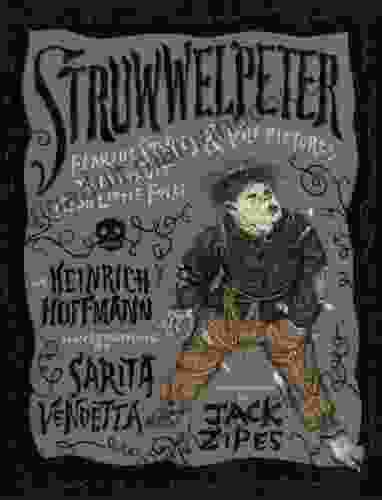
 George Martin
George MartinFearful Stories and Vile Pictures to Instruct Good Little...
In the annals of children's literature, few...

 Grant Hayes
Grant HayesJessica the Viscount Wallflower: A Tale of Transformation...
In the opulent ballrooms and glittering...

 Jerome Blair
Jerome BlairThe Economics of the Global Defence Industry: A...
The global...

 Blake Kennedy
Blake KennedyBreath of Heron - A Window into the Poetic Depths of...
In the realm of...
4.1 out of 5
| Language | : | English |
| File size | : | 10722 KB |
| Text-to-Speech | : | Enabled |
| Enhanced typesetting | : | Enabled |
| Print length | : | 474 pages |
| Screen Reader | : | Supported |


